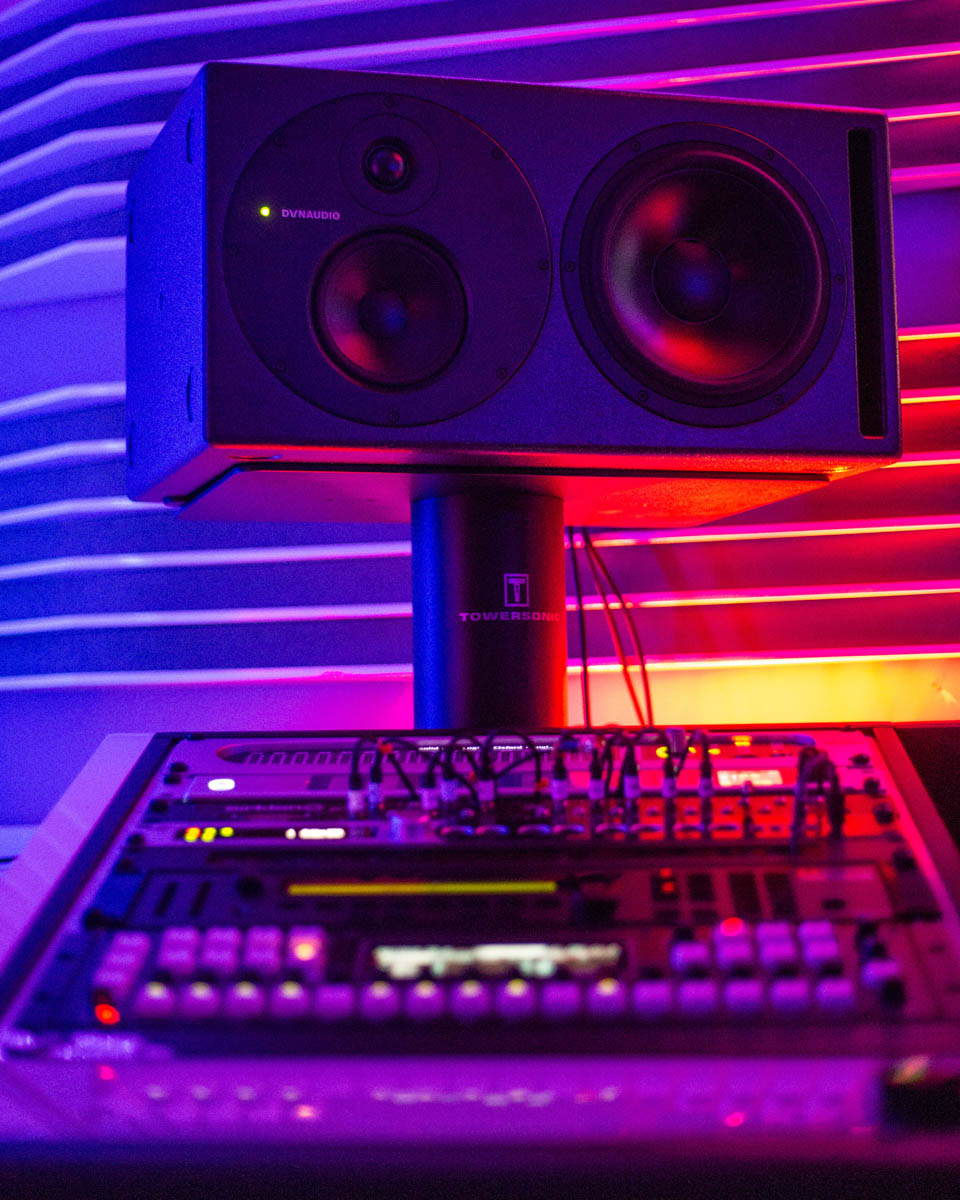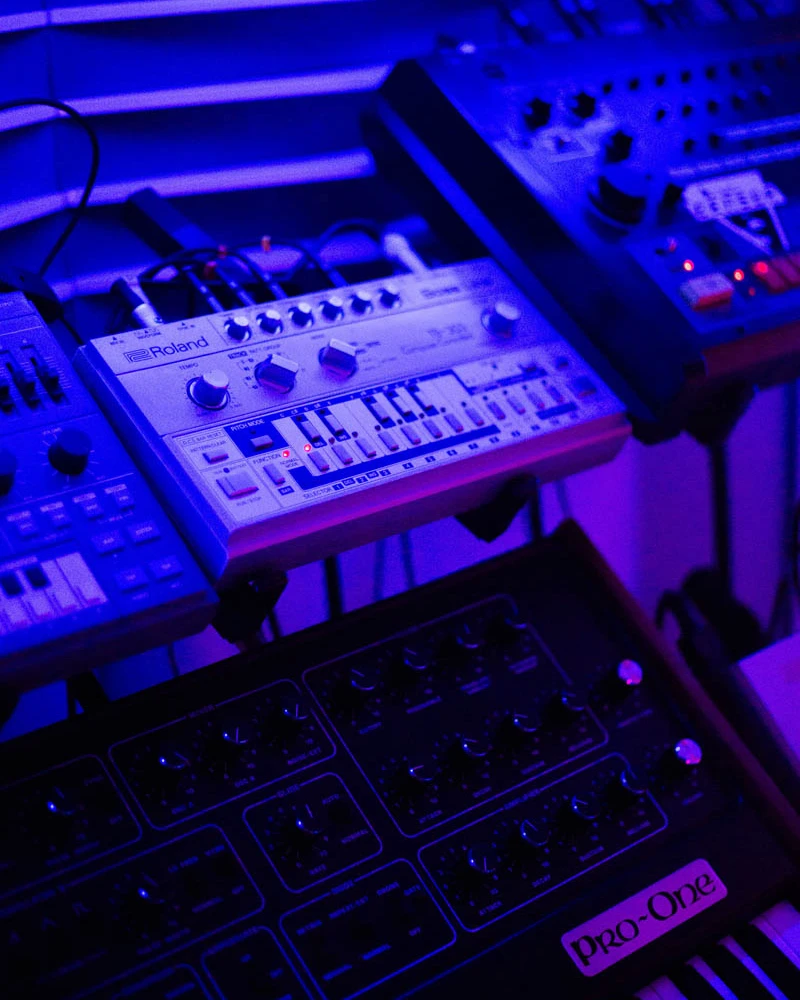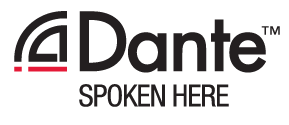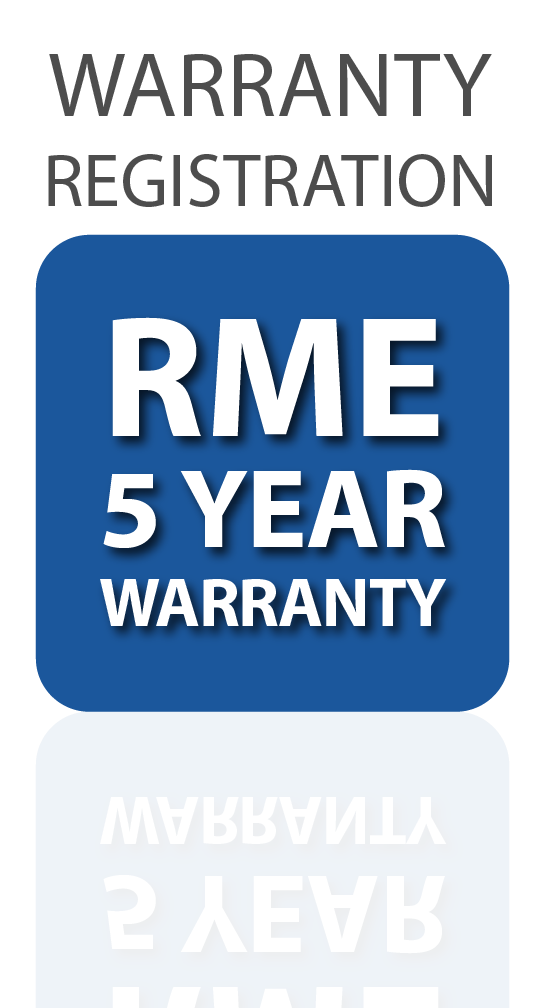Producer and Censor Music label boss Alex Jann gives us his thoughts on studio setups, running a label, and building his studio around RME, Ferrofish and iConnectivity.
Studio Gear & Workflow
Alex Jann is an Electro and Techno producer based in the South East of the UK. Discovering a love of electronic music as a teenager, he’s been producing for several decades, releasing on a number of different record labels before starting his own imprint Censor Music back in 2017.
Alex’s studio is a carefully curated space built over years of collecting – a hybrid setup of vintage classics and modern, cutting-edge machines.
Central to his workflow is the RME Fireface UFX III audio interface, which takes care of the core routing, conversion and monitoring. This is expanded via MADI with a Ferrofish A32pro Dante, providing additional I/O across his extensive collection of instruments and hardware FX, as well as providing a route onto a Dante network.
There’s also a Ferrofish Pulse 16 in the mix for extra connectivity, and an RME M-32 Pro DA, which handles recording in and out of his analogue summing mixer to round off this powerful hybrid system.
“I don’t really use a console anymore,” Alex explains. “The RME and Ferrofish gear give me super clean conversion and loads of flexibility. I run a MADI loop from the UFX III into the M-32 and A32pro, and that takes care of everything – from summing to guest machines. It’s super-low latency, so I can track directly while monitoring in real time, or use TotalMix’s direct-monitoring if I’m just jamming.”
For Alex, staying creative means having a studio setup that’s always ready to go – with everything labelled and connected, there’s no wasting precious studio time on troubleshooting or trying to fix problems.
At the core of this approach is RME’s TotalMix FX software mixer, which he says he essentially uses as a digital patchbay. “All my inputs and outputs are clearly labelled, so whether I’m sending a synth to a specific channel, routing audio through the summing mixer, or recording vocals, I can see everything instantly and send it anywhere with just a fader.”
Most of Alex’s tracks start life on the Sequentix Cirklon, which acts as the brain of the studio. “All my synths are routed through it, so I can build up full tracks in scenes and then just hit record. I treat Ableton more like a tape machine at that point – it’s a really fluid way of working.”
In terms of instruments, Alex has all of the dance classics: Roland TR-909, TR-808, TB-303 (and the often overlooked MC-202), as well as custom builds like the HK TR-707/727 hybrid, and a modified MPC 2500 for sampling. Then there’s the modern favourites like Elektron’s Analog Rytm, Digitone, and an ALM modular rig with MUM M8 filter and Squid Salmple modules.
He’s equally stacked for synths – Roland D-50, an SH-101, Oberheim OB-X8, Prophet-6, Prophet-10 and more, plus a selection of effects and pedals from Eventide and Lexicon; choice 500-series units like the Harrison 32C+; and his recently acquired Cranbourne Audio Carnaby HE2.
In the box, it’s mostly Ableton Live, with Logic and Pro Tools on hand if needed. “Ableton’s flexibility is a big part of how I work,” Alex says. “I love how simple the interface is, and it just makes sense for both writing and translating into live sets.” Plugins include bits from UAD, Soundtoys, and a growing mix of newer developers – though Alex says he often just uses stock plugins, which helps keep the CPU loads down.
See more videos at Synthax TV
Monitoring
“I’ve been using the Dynaudio Core 59s for the past year, and they’ve been a really welcome addition,” Alex says on his main monitors. “They’re a lovely three-way box that fill the space really nicely, so I don’t feel the need for a sub.” The room is fully acoustically treated, and combined with the Core 59s’ nine-inch low drivers and soft dome tweeters, Alex is confident in how his mixes are sounding across different systems. “I’ve mixed a lot of records on them already, both my own and for other people, and the mixes are translating exactly how I expect.”
For a second reference, Alex also relies on a pair of Angry Boxes from Tantrum Audio. “Yeah the little shout boxes,” he says. “They’re great for showing up issues in the midrange and low end. They just help give that extra perspective. I’ve had Avantones and things like that as well, but I really like the Tantrums.”

Studio Advice & Starting Out
Over the years, Alex has built his studio into a finely tuned creative space. But like many producers, it all began with a simple computer setup and a few early machines like the 303, 909, and Access Virus, and a growing passion for different sounds.
“I started out with just a few pieces and built things up over time. The most important thing is to find software that feels intuitive to you. I’d definitely recommend investing in a high-quality interface, and monitors early on, and a decent mic if you’re recording – that makes a huge difference.”
With tools like RME and Ferrofish forming the backbone of his current setup, he’s quick to stress that great music doesn’t require loads of gear. “Some of the best stuff I’ve heard has been made completely in the box,” he says. “The quality of plugins now is incredible, and DAWs like Ableton, Logic, even Reaper, they give you a huge amount of creative potential right from the start.”
One standout tip he shares is using synths or drum synths to create drum parts – something that opens the door to more unique textures. “Rather than reaching for the same sample pack as everyone else, using something like an FM synth or something modular for drums can really give you character. Plus, it makes things like pitch control super easy, and making sure things are in phase. Tuning your kick and bass together can make a big difference, especially if you’re making dance music – it just locks everything in.”
From quirky gear like the Moog DFAM to modular oddities and classic units like the Syncussion, Alex is drawn to tools that allow him to shape sound uniquely. But he’s also keen to point out that you can do a lot with a minimalist setup too.
“When I started out drum machines were quite cheap,” he says. “Everyone was going digital, so a lot of people were getting rid of these pieces that we now see as classics. That’s meant the price has gone up and up though, which has made it almost unattainable for some people.
“So for people to be able to use things like Roland Cloud, or just the inbuilt sounds of the DAW, it’s made it more accessible to everyone that wants to make music.
“I think the days are gone when there may have been a kind of snobbery. Some people would claim ‘oh, you have to use this piece of gear, or that piece of software’. Some of the best electronic music that I love was made with simple setups, just making songs with what they had. So yeah, I don’t think you have to have loads of outboard or anything to really to get going. Then if you’re interested in hardware, and you find certain instruments help you to create, that’s a good way to sort of grow over time.”

Simplifying MIDI with the MioXL
To keep things organised and flexible, Alex runs two iConnectivity MioXLs, using RTP MIDI to send MIDI over his network. “That’s been a game changer,” he explains. “I’ve got each section of the studio connected with minimal cabling – just a single network cable running into a Cisco switch, then out to my Mac and other devices. It keeps everything super tidy, reduces the numbers of cables, and means I don’t have any recall issues.”
Using Auracle (iConnectivity’s software), he sets up dynamic MIDI routing just like he does with audio in TotalMix. “These days I prefer not to use traditional patchbays,” he continues. “I’d rather have everything plugged in and ready to go all the time. That way everything just works immediately. And if I’m revisiting a project, my compressors, synths, reverbs etc – they’re always connected and instantly recallable.”
Alex says he was initially drawn to the MioXL for its affordability, plus the powerful multi-host USB and RTP MIDI support. But he’s also found it outperformed many of the other MIDI interfaces he’d used in the past. “I was looking at forums and people were saying about the benefit of RTP MIDI in a live set up, and I knew a lot live engineers were using iConnectivity in their playback rigs.
“I was using a couple of different brands before and they’d always been very good, but they were also pretty limited in what you could do.
“With the Mio there’s filtering, advanced routing, how well it integrates with the Cirklon, and the fact you can connect devices via USB, MIDI and RTP, that really appealed to me. So after using one for a year, I picked up a second to fully optimise the rest of the studio.
“I’m actually planning a new live rig around the PlayAUDIO1U. It’s very affordable, and has the built in multi-host making it great for redundancy, I think they’re very good devices and provide great value. Fantastic brand.”
![]()
Advice on Building a Studio
As someone with years of experience in building studios, we were keen to get Alex’s advice this subject. According to Alex, everything starts with having a clear sense of purpose. “It’s important to know what you want to achieve with the studio,” he says. “Is it just going to be mainly for mixing? Recording? A jamming or writing space? Understanding that will naturally lead you towards the next steps.”
That clarity informs everything else – from the gear, to how it all connects. “If you’re planning to run lots of outboard or processors, you might be thinking about things like 500 series, and how they’re going to connect to your setup. What are your routing options? How much I/O do you actually need? Do you need preamps?”
The foundation, however, is always the same.
“Good monitors, a solid interface, and proper acoustic treatment – those are key,” advises Alex. “They’re what make a space enjoyable to work in and ties everything together, no matter the size or how much gear you’ve got.”
Alex also recommends thinking practically about workflow and accessibility. “You’ll naturally find your way of working, but it helps to map things out. I’ve used spreadsheets before to figure out the routing for bigger setups – what’s connected where, what needs to be patched in, what gear I want to have instantly to hand.”
Ultimately, it’s about building something that works for you. “There’s no single way to do it, but knowing what you want to get out of the space will guide all the decisions that follow.”

Running a Label with purpose
Alongside producing and DJing, Alex also runs his own record label Censor Music, which specialises in sci-fi influenced Electro and Techno. For Alex, it’s never been just about putting out records for records sake – it’s about building a platform that represents a specific sonic identity, and with a community of like-minded artists.
“I got to the point where I was writing a lot, just jamming, mixing, creating – and I felt like I had something to say with my music,” Alex explains. “It’s very inspired by technology, and I wanted to create a space for not only releasing my own work, but also as a way to spotlight friends and artists whose sound I really believe in.”
His label has become an extension of his musical philosophy – curated, focused, and rooted in Electro and IDM aesthetics. “It is something of a ‘labour of love’, and it’s got to be consistent with the vision,” he continues. “It’s about working with people who are on the same wavelength, who understand the sound that we’re pushing.”
Whilst its never been easier to sell music digitally, Alex says that navigating the world of independent vinyl releases isn’t without its challenges. “Vinyl demand is still huge, and as such there’s always a queue with the pressing plants. That’s probably the biggest challenge, and it’s easy to have releases sometimes slip by by months, even close to a year due to the queue. That kind of delay can really disrupt momentum, especially when you’re a small operation.”
Beyond logistics, standing out in an oversaturated digital landscape is another hurdle. “There’s a constant flood of promos and new music – it’s a lot to cut through,” he says. “But I think if you stick to your identity, people will start to recognise what you’re about. You want to be one of those labels people trust – you see the logo and you know it’s going to be quality.”

For Alex, that consistency is everything – from the music and artwork, to the people behind the scenes. “You need someone doing A&R who actually cares. Not just chasing the next viral trend, but really living and breathing the music. That’s what creates lasting impact.”
He draws a parallel to record stores, which have played a huge role in his journey. “There’s nothing like having someone behind the counter who knows your taste, puts records aside for you. That kind of curation, that personal connection – that’s what we try to bring to the label.
“You know in a perfect world I’d probably put out a record every two months or something, but yeah there’s a lot of work with the promotion and everything else. I don’t want it to become a throwaway thing – every time we’ve released something it’s because the artist felt they had something to say. The label is also a reflection of where I’m at musically: each release reflects where I’m at in my productions, and each one has to mean something.”
Our thanks to AlexJann. For listeners new to his musical world, Alex recommends checking out his Bandcamp or diving into the catalogs of labels he’s worked with – Brokntoys, Mechatronica, Cultivated Electronics and others.





















